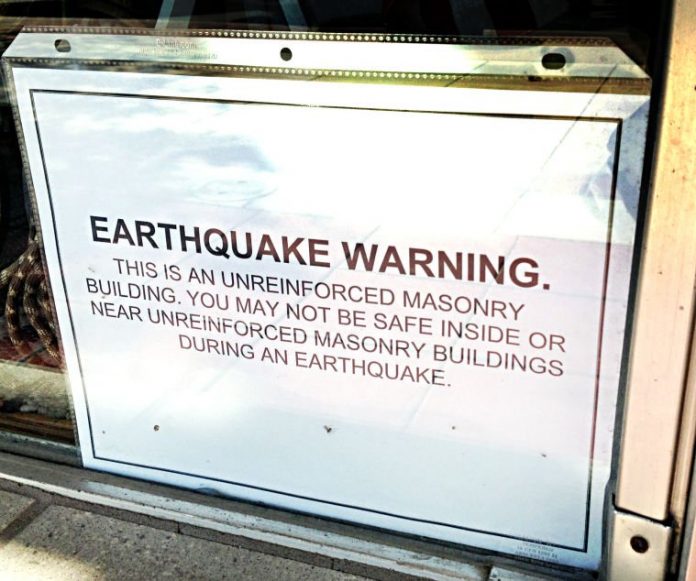
City officials plan on turning up the heat on owners of buildings deemed unfit to survive a high magnitude earthquake, especially those who have not complied with Gilroy’s unreinforced masonry ordinance. At the Aug. 18 City Council meeting, Mayor Don Gage advocated for increasing fines on delinquent property owners.
Established in 2011, the homegrown ordinance requires vacant unreinforced masonry (URM) buildings be retrofitted before a business can occupy the building. In Gilroy, there are 17 URM buildings and one is slated for demolition. Combined, property owners owe the City $156,000 in unpaid fines and late fees, according to City documents.
Thirteen of the 16 remaining URM property owners have met with City officials but are at various stages of completion, from still needing building permits or under construction, according to Building Official David Chung. He presented a strategy to the council in hopes of tackling the problem as a whole. It involves setting schedules for every property, increasing penalties and dole out incentives for work completed on time.
“Each building has its own challenges,” Chung said. “They are all different and it’s difficult to address all of them at once, but this is an attempt.”
Six properties, all on the 7400 or 7500 block of Monterey Street, are either under construction or nearing construction for mandatory or voluntary retrofits.
According to the ordinance, the maximum penalty for an individual property owner is $15,000. But if property owners fail to comply with City deadlines, the ordinance allows the City Council to rehabilitate or demolish buildings. The City would then place a lien on the property for the total cost.
The idea of increasing penalties didn’t sit well with URM property owner William Singh, who said sharing a wall with a neighbor next door has made the process difficult.
“Fining is a great way to motivate people who simply don’t want to do anything, but in my particular case, fining and adding fines to that isn’t going to push me to do anything because there are times I want to do something, but my neighbor doesn’t want to,” Singh said, adding that his neighboring property has change hands three times since 2005.
But Singh’s pleas cut no ice with Gage.
“The fines are going to go up until you guys resolve what you have to do,” he asserted, listing repairs that Singh must complete in cooperation with his neighbor. “When those occur, come talk to us. Until then, you’re going to continue to get fined because nothing has happened.”
According to Chung, a successful strategy has involved setting deadlines for retrofits and other repairs. Each property owner sits down with the URM Task Force—which includes Gage and Mayor Pro Tem Perry Woodward—and they hash out the details.
“Coming up with a predictable timeline for construction is important because we are doing their part. They need to do their part,” Chung said.














